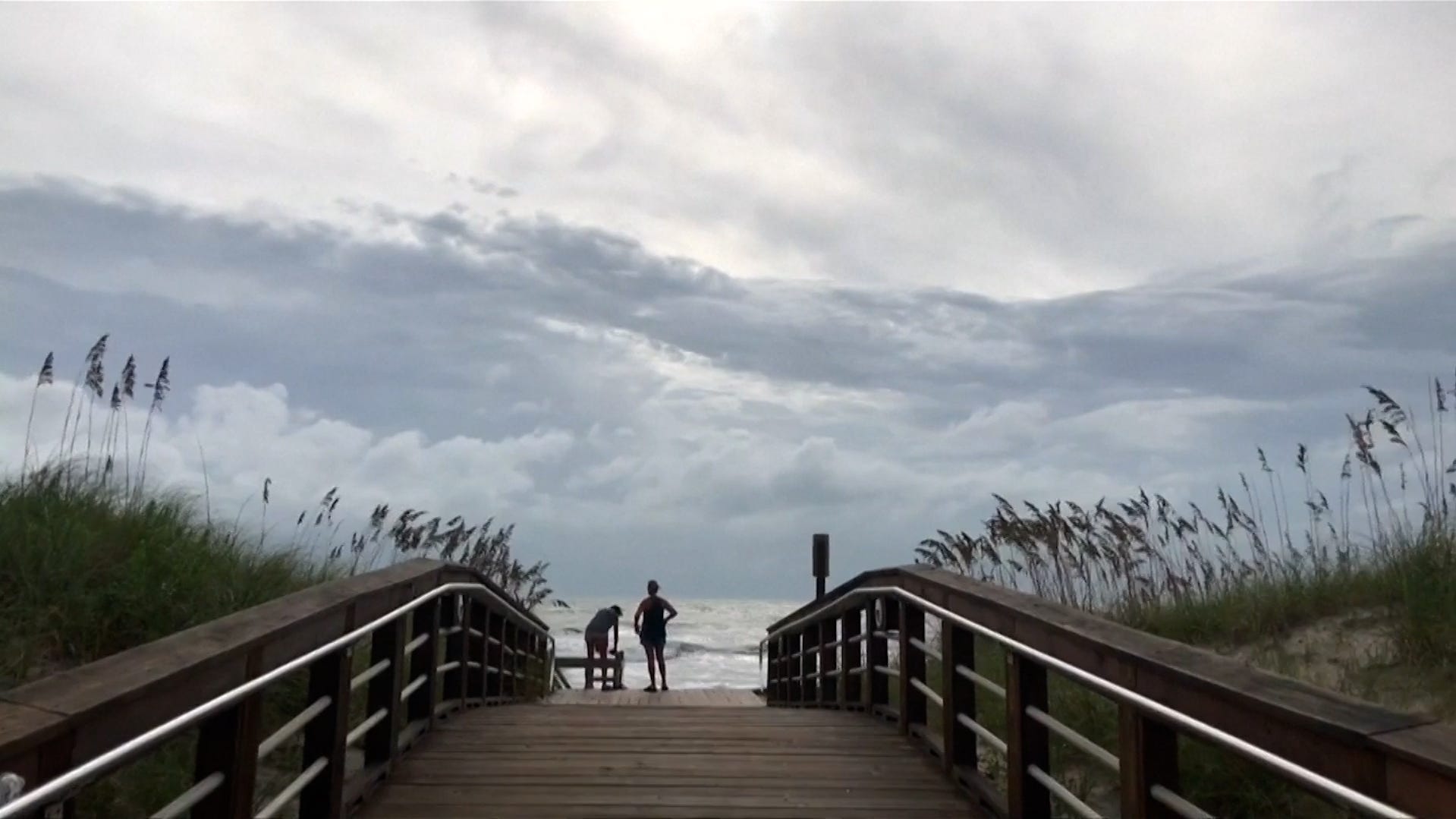Storm tracker: Hurricane forecasters warn of rainy tropical system along Gulf Coast

Editor's note: This system's chances of developing have increased. Click here for the latest update on July 17.
A slow-developing weather system is threatening to bring heavy rain and flooding to portions of the Gulf Coast over the next few days, regardless of whether it officially becomes a tropical storm or depression, forecasters said July 16.
The system, which is now a broad area of low pressure, is located along the coast of the Florida Panhandle near Panama City and is producing disorganized showers and thunderstorm activity mainly south of its center, the National Hurricane Center said Wednesday afternoon, July 16.
Hurricane center forecasters said the system, designated as Invest 93L, is forecast to continue moving westward and could emerge or redevelop over the far northeastern to north-central portion of the Gulf, reaching the coast of Louisiana by Thursday.
Tropical depression could still form
"If this system moves far enough offshore, environmental conditions over the Gulf appear generally favorable for additional development, and a tropical depression could still form over the next couple of days before the system moves fully inland by the end of the week," the hurricane center said in its 2 p.m. ET advisory on July 16.
The system is expected to provide heavy rainfall, which could produce localized flash flooding over portions of Florida through Wednesday. Flash flooding could also occur in portions of the north-central Gulf Coast beginning late Wednesday and continuing through Friday, the hurricane center said.
The National Weather Service in New Orleans warned that the system will bring locally heavy rainfall capable of causing flooding to southeast Louisiana and coastal Mississippi, especially on Thursday and Friday.
Overall, the weather service said that up to 10 inches of rain could fall in portions of southern Louisiana over the next several days.
AccuWeather forecasters expect a potential tropical depression to make landfall in southeastern Louisiana Thursday afternoon, bringing heavy rain and storm surge. Storm surge of 1 to 3 feet and wind gusts from 40 to 60 mph are possible in southeastern Louisiana to coastal Mississippi, according to AccuWeather, especially if the storm organizes into a tropical storm before landfall.
Invest 93L currently has a 40% chance for tropical development over the next seven days and a 40% chance over the next 48 hours.
The next named storm of the 2025 Atlantic hurricane season will be Dexter.
Atlantic storm tracker
This forecast track shows the most likely path of the center of the storm. It does not illustrate the full width of the storm or its impacts, and the center of the storm is likely to travel outside the cone up to 33% of the time.
Spaghetti models for Invest 93L
Illustrations include an array of forecast tools and models, and not all are created equal. The hurricane center uses only the top four or five highest performing models to help make its forecasts.
How do hurricanes form?
Hurricanes are born in the tropics, above warm water. Clusters of thunderstorms can develop over the ocean when water temperatures exceed 80 degrees Fahrenheit. If conditions are right, the clusters swirl into a storm known as a tropical wave or tropical depression.
A tropical depression becomes a named tropical storm once its sustained wind speeds reaches 39 miles per hour. When its winds reach 74 mph, the storm officially becomes a hurricane.
Prepare now for hurricanes
Delaying potentially life-saving preparations could mean waiting until it’s too late. "Get your disaster supplies while the shelves are still stocked, and get that insurance checkup early, as flood insurance requires a 30-day waiting period," NOAA recommends.
- Develop an evacuation plan: If you are at risk from hurricanes, you need an evacuation plan. Now is the time to begin planning where you would go and how you would get there.
- Assemble disaster supplies: Whether you’re evacuating or sheltering-in-place, you’re going to need supplies not just to get through the storm but for the potentially lengthy aftermath, NOAA said.
- Get an insurance checkup and document your possessions: Contact your insurance company or agent now and ask for an insurance check-up to make sure you have enough insurance to repair or even replace your home and/or belongings. Remember, home and renters insurance doesn’t cover flooding, so you’ll need a separate policy for it. Flood insurance is available through your company, agent, or the National Flood Insurance Program. Act now, as flood insurance requires a 30-day waiting period.
- Create a family communication plan: NOAA said to take the time now to write down your hurricane plan, and share it with your family. Determine family meeting places, and make sure to include an out-of-town location in case of evacuation.
- Strengthen your home: Now is the time to improve your home’s ability to withstand hurricane impacts. Trim trees; install storm shutters, accordion shutters, and/or impact glass; seal outside wall openings.
Gabe Hauari is a national trending news reporter at Paste BN. You can follow him on X @GabeHauari or email him at Gdhauari@gannett.com.